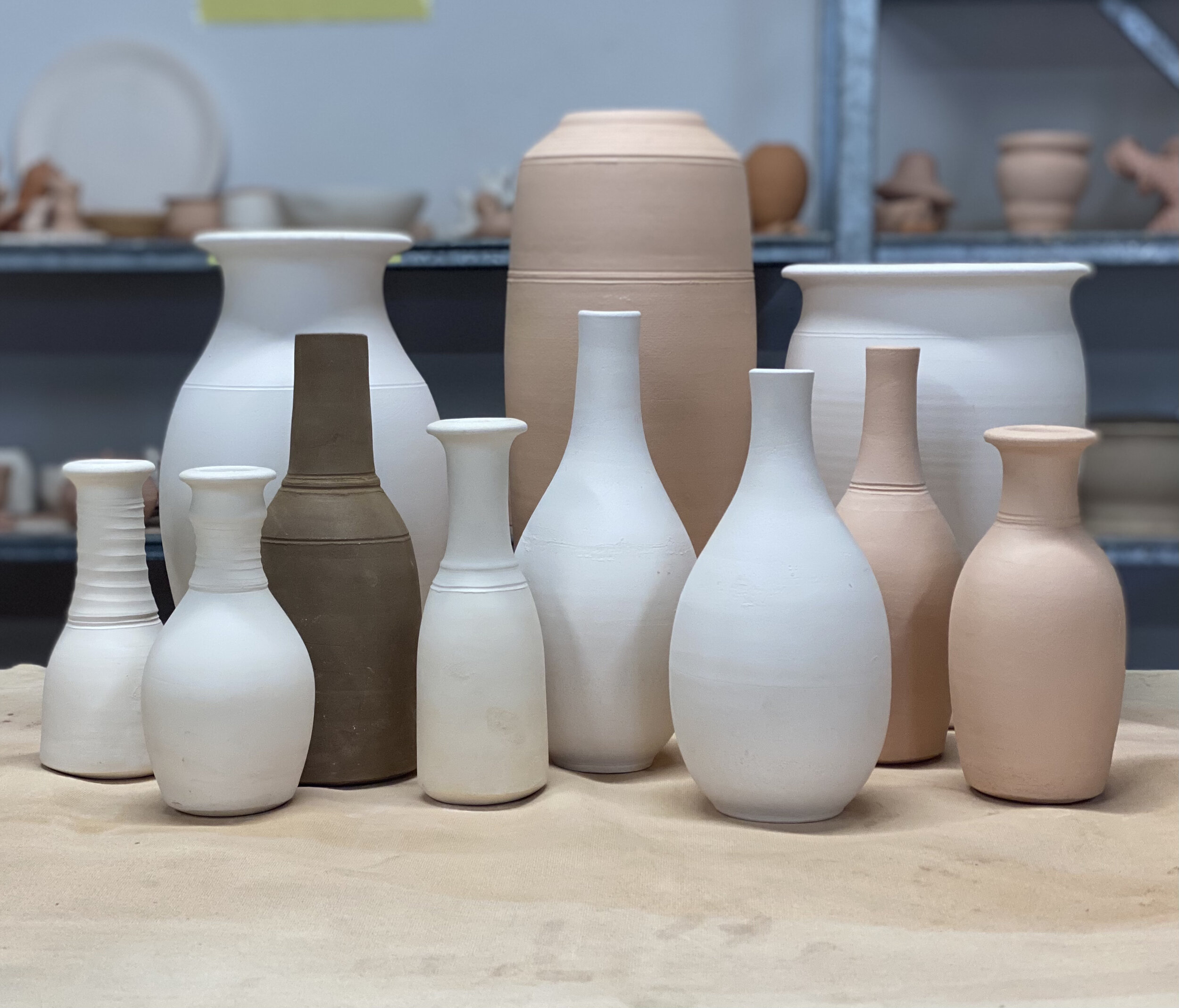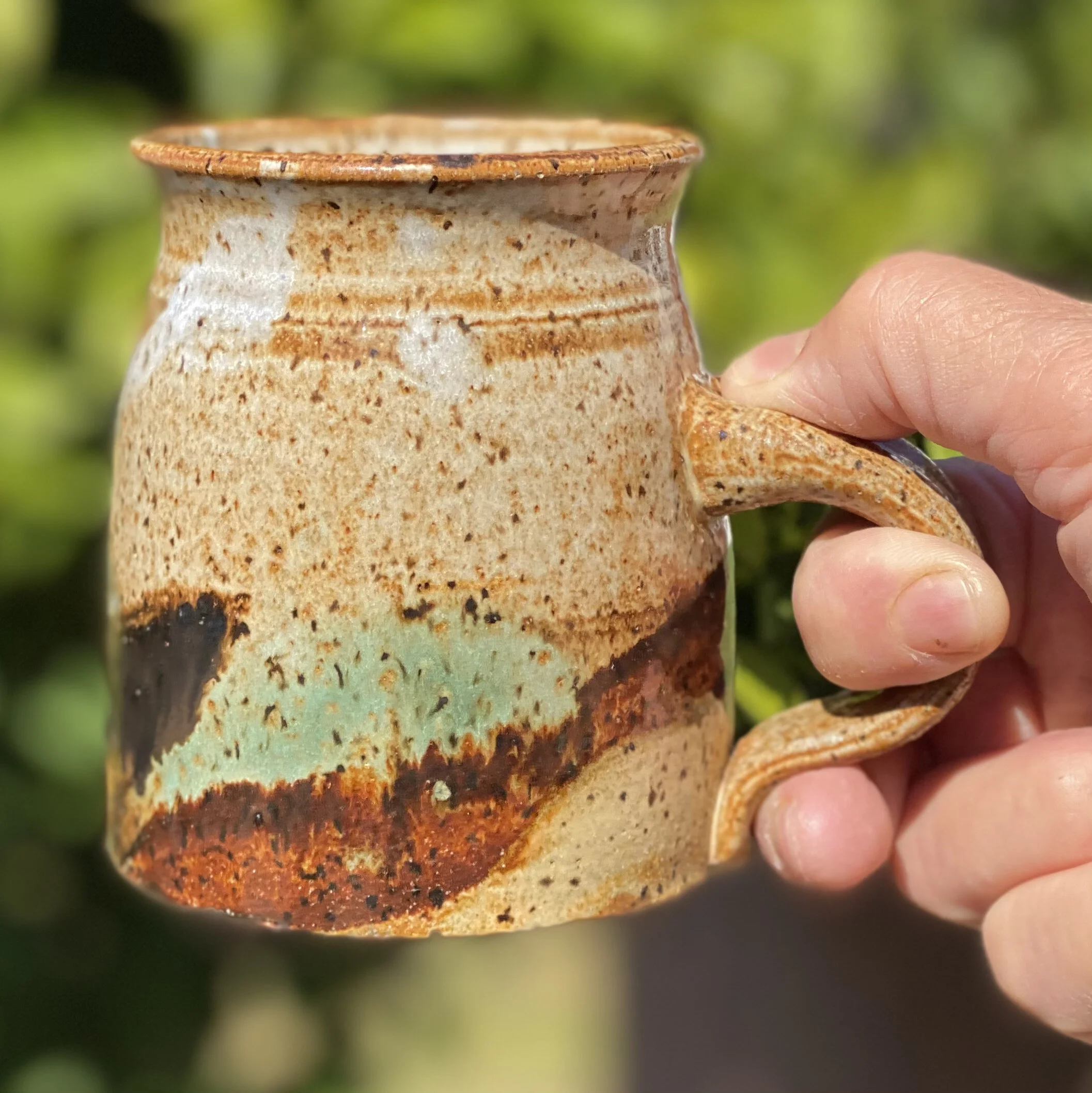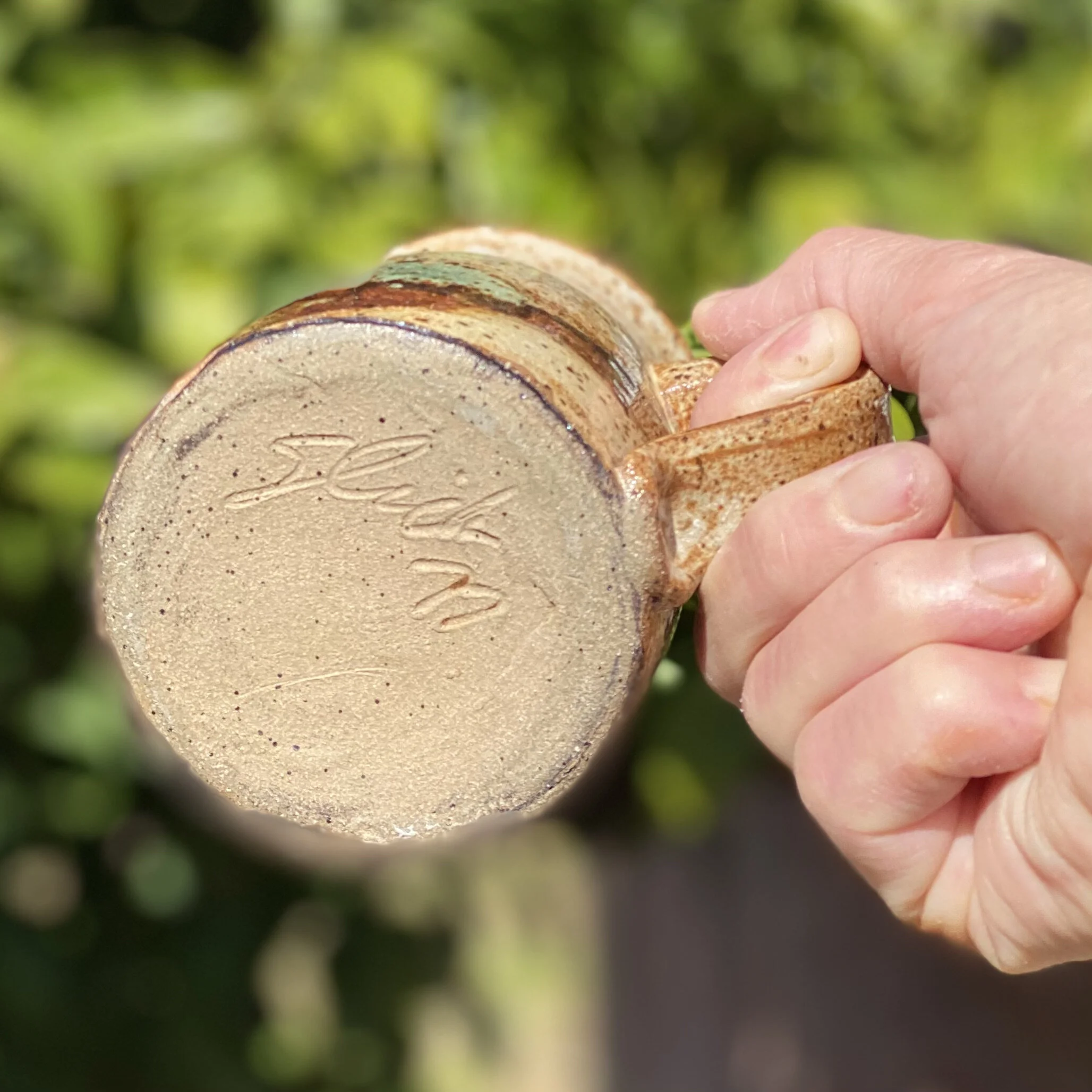CARE
The main reason that pottery breaks is dropping.
Pottery Does Not Bounce!
Folks often ask about the durability of pottery, wondering if something handmade will last? I then ask them to recall what some of the most prevalent artifacts are that they see at museums when viewing ancient cultures? Correct, pottery! With proper care, pottery will most assuredly last much longer than we will.
All my pottery has been kiln fired twice, the second firing to a cone 6 stoneware temperature of about 2232 degrees Fahrenheit. Every piece of pottery I create is 100% food safe and perfectly fine to use in ovens, microwaves and dishwashers, but please ‘DO NOT’ place directly onto stove top burners.
As an ‘old’ potter myself, I have first hand knowledge of using, on a regular basis, pieces of pottery that I made back in the mid 1970’s. Yes, I have mugs and other pots that have been in use, in and out of dishwashers and microwaves on a regular basis for nearly 45 years.
“Speaking of old, this cone 6 fired mug was made in 1977, during my second year of making my living as a Potter. Back then, this mug was a gift to my Father and he used it daily at his office until he retired. He and Mom used it at their house after that and after they had both passed away, I brought it back home with me.”
“Does pottery last? This mug has been in a steady rotation of use for the last 44 years, it has literally been used in microwaves, dishwashers and sipped from thousands of times. It is still serving up beverages and in the process it conjures up a treasure trove of sweet heartfelt memories of those that have held and sipped from it through the years. In that sense, it has also become more precious to me, a true link to my family and a tangible connection that invites me, through its use, to reflect upon our shared and cherished past.”
“Viewing and using this old mug also provides a lesson, as it shows me how my pottery skills and aesthetic understanding of form and function have become more refined over time. It appears that my ability to sign my name in clay has improved as well.”
I often read potters recommending hand washing of pots as the preferred and safest method to increase their longevity, as opposed to being loaded into the dishwasher. I can honestly say that I can’t ever remember breaking or having a problem with a pot washed in the dishwasher, except problems caused by reckless loading, not by the dishwasher itself. I can also testify that while hand washing, more than a few pots have slipped out of my soapy hands, falling to earth to meet their demise. Remember, pottery does not bounce. I really can’t recall any problems with my pottery that were specifically due to microwaves or dishwashers, unless it was initiated by user error. I’m sure it’s possible, but it certainly hasn’t been my experience.
Besides dropping, the main cause for pottery damage is due to thermal shock. Simply put, that means sudden temperature changes from cold to hot or vise versa. You never want to take something you’ve had stored in the refrigerator and put it into a hot oven or microwave as that rapid temperature change could cause damage, which would most often be some form of cracking. To make your pots last for many years, it is always best to start at room temperature or to pre heat or cool with tap water, depending on the temperature of what you’ll be filling the pottery with.
There is another benefit for preheating or cooling that I rarely see mentioned. Pottery takes on the temperature of whatever it is holding inside. When you pour hot coffee into a room temperature mug, the mug itself will be heated up by that hot coffee, effectively robbing heat directly from the coffee. You can however use this thermal property to your advantage. If you really want your beverage to stay hot, preheat the mug for a minute with hot tap water, then empty and add the beverage you’ll be consuming. Your drink will stay hot much longer as it will not be losing heat to the mug. The same principal is true for keeping cold beverages cold longer.
For these thermal advantages I also like my pots to have a bit of thickness to their walls. Sure, it adds a little bit of weight to the pot, but in my opinion the added thermal properties are much more functional than what you get from a very thin walled pot. I find them to be more durable too.
If properly cared for you may need to keep a spot open for these pots in your will ;)



